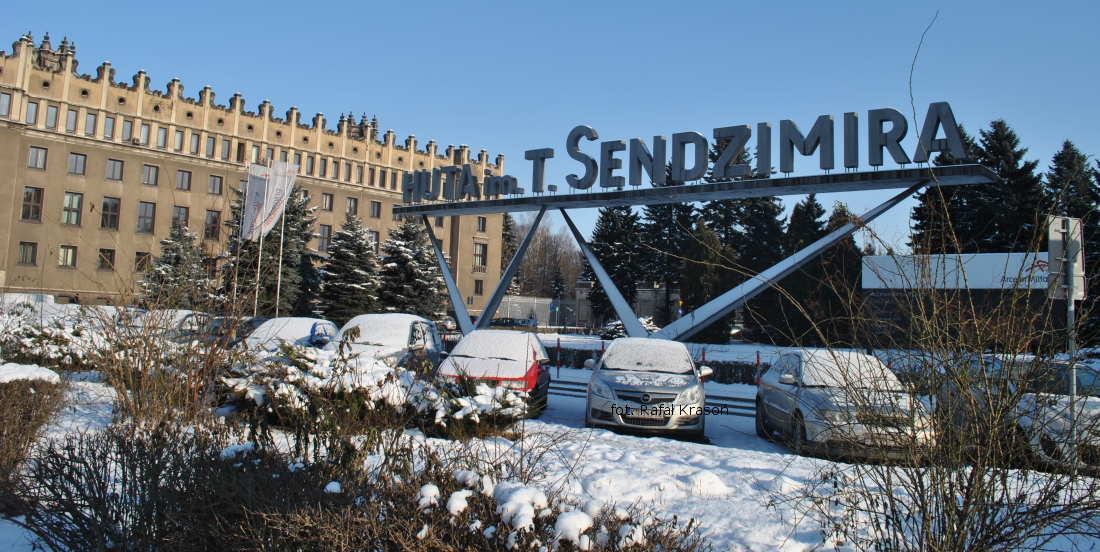
Nowa Huta (direct translation New Steelwork) as a city exists from after-war period. In 1947 a decision about erecting a new town near Krakow was undertaken. Until today historians examine the decision and the main purpose for this. The decision had no economic background. In this part of Poland there is no coal, petrol or other fuel to melt steel. There is no ore either. Second, localization of the steelwork as well as the nearby city Nowa Huta on the best soils - humus, seems to be nonsense. The only rational purpose is political reasons.
In 1947 Polish head of the Red Party Bolesław Bierut signed agreement with Russia about erection of the steelwork using Soviet technologies. Soon new factory and infrastructure around was built. The factory was surrounded by green ring of land of two kilometers wide. Inside the ring some villages existed, however their inhabitants had no rights to build new houses or renovate the old ones.
Three kilometers from the factory the communists erected a new city called Nowa Huta (New Steelworks). The city had to secure labor force for the factory. It was organized as a perfect settlement with all needs for its inhabitants. Nowa Huta was divided into quarters, called dependently of its main function School Quarter, Theatre Quarter or reflecting traditions – Wanda’s Quarter (Wanda – legendary hero of Krakow), or simply Quarter A, Quarter B, Quarter C, Quarter D, etc.
From the very beginning Nowa Huta had to be atheists city. The architects did not plan churches. The only 12th century church, belonging to Cistercians existed in south-eastern part of the city. In the 60-s it was the biggest parish in the world with about 100 thousand believers.
In the following years Nowa Huta became a popular district of Krakow. It’s also new tourist place willingly visited by foreign tourists.
Worth to see:
• Soc-realism architecture:
- Plac Centralny
- Lenin's Monument
-'Swedish Block' and 'French Block'
• Cistercians monastery
• Wanda's Mound
• Austrian fortifications
• Jan Matejko's house
•Ark of the Lord church
• Wooden houses













